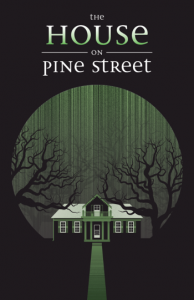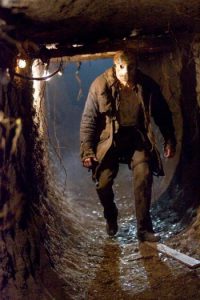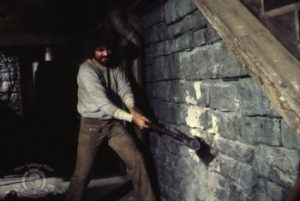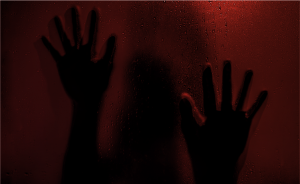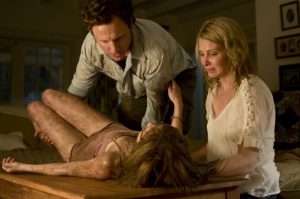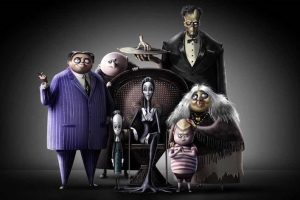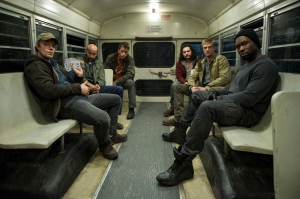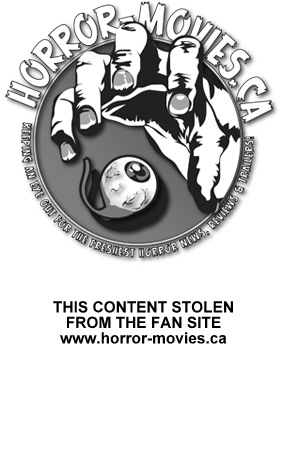
Nosferatu: A Symphony of Horror (1922) Review
 Let me say that not only am I a fan of horror films, but I’m a fan of black and white horror films… and silent black and white horror films. There’s just something satisfying about watching a well made “old school” movie that is innovative and able to tap into your emotions without being heavily reliant of technology to do so.
Let me say that not only am I a fan of horror films, but I’m a fan of black and white horror films… and silent black and white horror films. There’s just something satisfying about watching a well made “old school” movie that is innovative and able to tap into your emotions without being heavily reliant of technology to do so.
“Nosferatu” is one of those films.
During World War One, Albin Grau- one of the founders of Prana Films, was inspired to do a vampire film when a Serbian farmer informed Grau that his father was one of the Undead. In 1921, Grau and his partner, Enrico Dieckmann assigned Henrik Galeen to come up with a screenplay based loosely on Bram Stokers novel, “Dracula”. French-German film critic Lotte Eisner described Galeen’s Expressionist screenplay as being “full of poetry, full of rhythm”
Thomas Hutter is sent to Transylvania to meet a new client by the name of Count Orlok. Despite being warned about Count Orlok and the presence of werewolves, Hutter continues to his new clients castle. Soon, Hutter is in a race against time as he realizes that Count Orlok has set his eyes on making Hutter’s beautiful wife, Ellen, his own bride.
This entire movie was filmed with only one camera, creating only one original negative. Director F.W. Murnau followed Galeen’s handwritten notes regarding camera positioning, lighting, etc- which is rare in cinema today, where it’s usually the Director that decides on those things. Murnau did, however have to rewrite 12 pages of the original script as Galeen’s text was missing from the Director’s working script. The final scene of the film is actually Murnau’s contribution to the script. He used a metronome to give the actors an idea of the pace of the scene, and used early styled storyboards to plot out the action.
I have always felt that a true horror fan not only has an appreciation for recent films, but a fine appreciation of older films, and how they built the basis for what we see today… and that includes silent black and white films like “Nosferatu“. This film has a place of honour in the horror genre, and deserves it.
“Nosferatu” is a masterful piece of work. The use of shadows and light create a creeping, stalking atmosphere of unease. The acting is theatrical and larger than life. I could almost imagine myself sitting in a theater and watching it being acted out on a stage (which, in my opinion would be pretty dang cool). The pacing is strong and flows nicely from one shot to the next. This is helped by the fantastic camerawork. Without the use of complex camera movements or angles, “Nosferatu” has provided the world so many iconic images, you have to admire the skill of those involved.
Greta Schroder was beautiful as Thomas Hutter’s wife, Ellen… but the real star of this film is Max Schrek as Count Orlok. Let’s face it, his acting skill is only enhanced by the astounding make-up. In my opinion, the make-up used for the Count not only stands the test of time, but rivals some of the stuff that’s been put on screen today. I mean, just look at how fantastic it is:
Now, tell me that that isn’t just a masterful piece of creepiness, eh?!? This make-up was a huge influence on the look of the vampire, Kurt Barlow, in 1979′s TV movie, “Salem’s Lot“.
While, many of the younger horror fans of today would probably be bored with this movie, those of us in the 30+ age group will probably have a fine appreciation of this film, and probably enjoy watching it. In fact, I would have no problem watching this film as part of a triple feature with Lon Chaney’s 1925 “Phantom of the Opera“, and his 1923 “The Hunchback of Notre Dame“.
“Nosferatu: A Symphony of Horror” is a film that any true student of the horror genre should watch- even if it’s just to see the roots of not just vampire films- but one of the films that helped give birth to the horror genre itself.



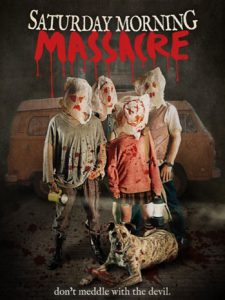
![Love in the Time of Monsters [Review]](https://www.horror-movies.ca/wp-content/uploads/2021/04/Love-in-the-Time-of-Monsters-Poster-350x531-1-198x300.jpg)
![Fantasia 2018: Puppet Master: The Littlest Reich [Review]](https://www.horror-movies.ca/wp-content/uploads/2021/04/PMLR12-UDO-KIER-350x216-1-300x185.jpg)
![[Horror Short Review] Cindy Maples’ Random](https://www.horror-movies.ca/wp-content/uploads/2021/04/Random-Poster-350x524-1-200x300.jpg)
